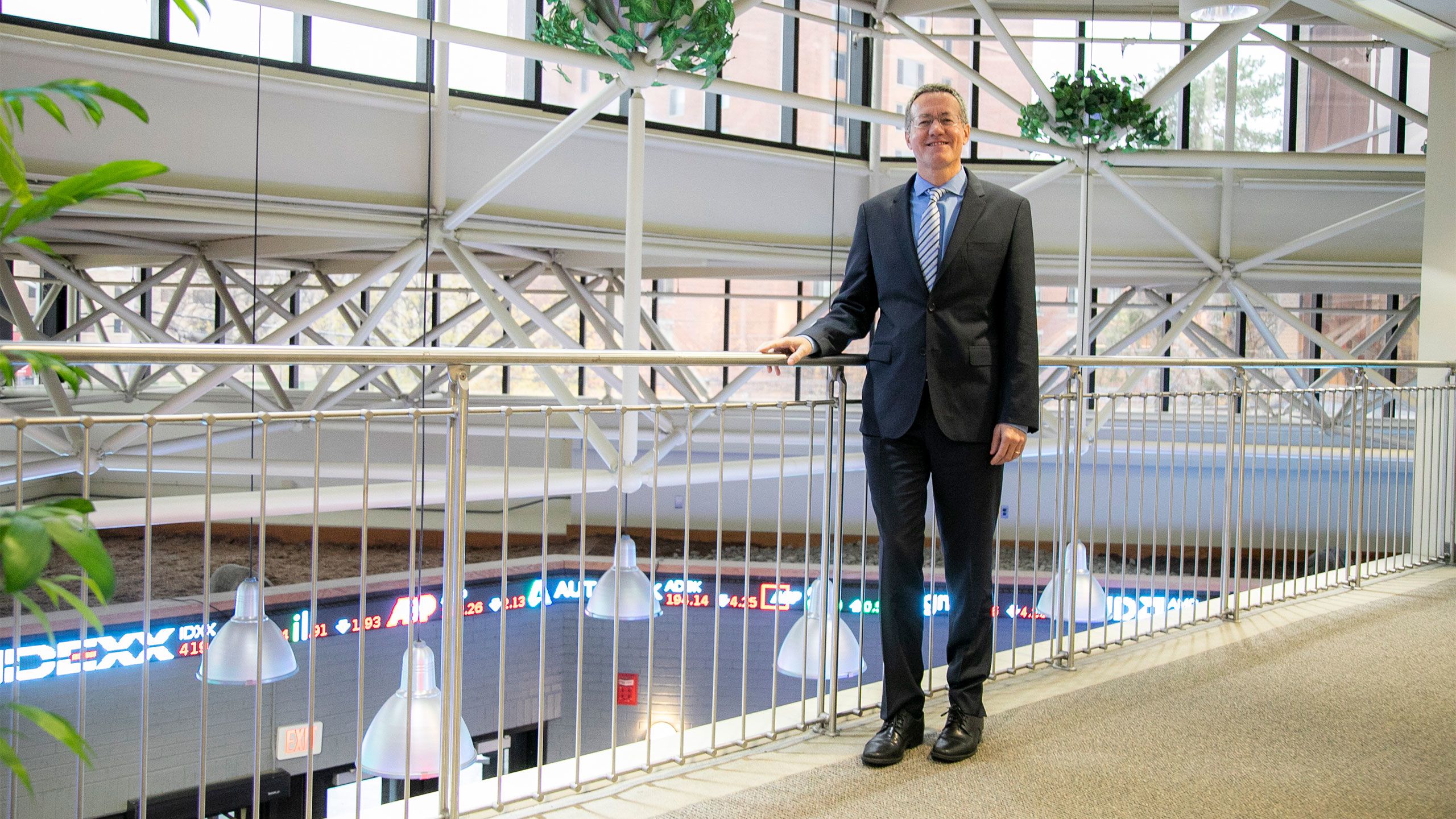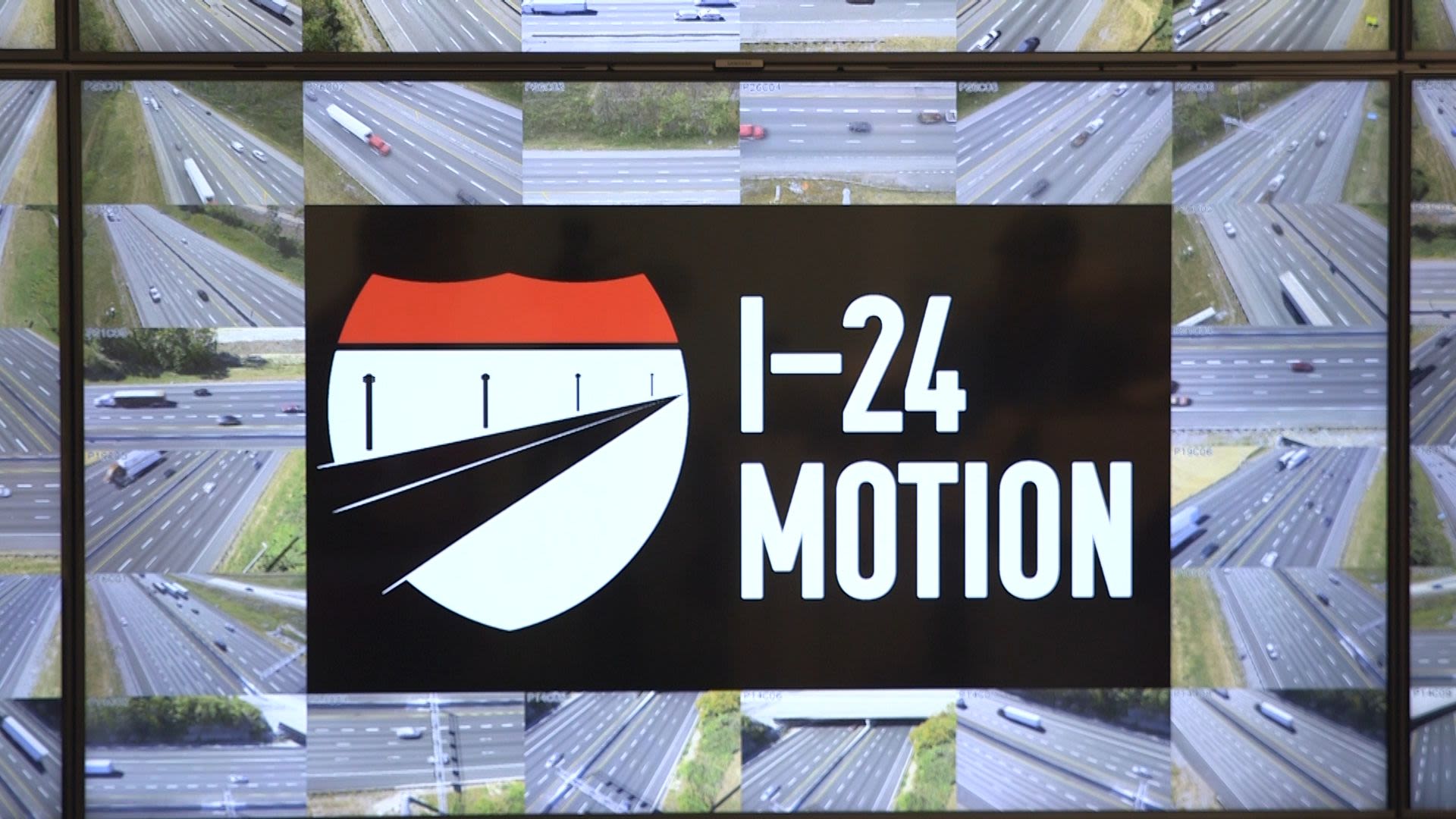Road Scholars
Rutgers–Camden Partners on World’s Largest Traffic Experiment to Test AI-Equipped Vehicles

In mid-November, 100 vehicles comprised of Nissan Rogues, Toyota RAV4s, and a Cadillac XT5 joined the morning rush hour on a stretch of Interstate 24 in Tennessee. Only this was no ordinary commute; the vehicles were equipped with artificial intelligence (AI)-driven adaptive cruise control and the stretch of highway was newly outfitted to serve as a testbed for intelligent transportation technologies.
The CIRCLES Consortium, comprising Rutgers University–Camden; the University of California, Berkeley; Vanderbilt University; and Temple University, collaborated with Nissan North America, Toyota, GM, and the Tennessee Department of Transportation, to test the effectiveness of an AI-powered cruise control system, designed to increase fuel savings and ease traffic.
The experiment—which ran from Nov. 14 to Nov. 18—aimed to replicate results from an earlier, closed-track study where a single autonomous vehicle smoothed human-caused traffic congestion, leading to a 40 percent fuel savings.
“This is the largest traffic experiment in traffic history with autonomous vehicles on a real highway,” said Benedetto Piccoli, the Joseph and Loretta Lopez Chair Professor of Mathematics at Rutgers–Camden and the university’s lead researcher on the project. “I am very proud of the role played by Rutgers–Camden’s team, ranging from control algorithm development to logistics.”
Rutgers University–Camden Chancellor Antonio D. Tillis applauded Rutgers–Camden’s researchers for their collaborative work on the CIRCLES Consortium. “Their research on autonomous innovation is emblematic of Rutgers–Camden’s mission to partner on initiatives that have a meaningful, real-world impact,” Tillis said. “Their work will ultimately benefit generations to come.”
Piccoli explained that, by trying to influence traffic using a small number of autonomous vehicles, you can smooth “stop-and-go waves” – cycles of accelerating and braking due to intersections or other irregularities – and improve the energy footprint. “These waves cause a lot of problems, including increased fuel consumption and decreased safety,” Piccoli said. “Removing those waves will improve driver experiences and save you a lot of money.”
According to the Rutgers–Camden researcher and his colleagues, even just one vehicle equipped with adaptive cruise control (ACC)—which has the ability to speed up and slow down a vehicle while maintaining a safe distance relative to the vehicle in front of it—could change the driving behavior of up to 20 surrounding cars. This in turn causes a positive ripple effect in day-to-day traffic. Piccoli further noted that if the ACC control affected fuel consumption of each vehicle by even a small percentage, it could make a major difference. “Imagine what the impact would be of reducing the energy of each vehicle by 10 percent multiplied by the entire fleet traveling on I-24,” Piccoli said. “You can imagine the numbers are very big.”


The CIRCLES Consortium researchers increased the scale of the testing and introduced real-world driving conditions to determine whether the improved traffic and fuel-economy outcomes measured in an earlier study continued to hold. The test was conducted on the recently opened I-24 MOTION testbed, the only real-world automotive testing environment of its kind in the world. Stretching for four miles just southeast of downtown Nashville, the smart highway is equipped with 300 4K digital sensors capable of logging 260,000 vehicle-miles of data per day.
The Rutgers–Camden team was particularly instrumental in designing the controllers – a modification of existing automotive cruise control present in many vehicles. The team also spent weeks in Nashville leading up to and during the experiment to facilitate the comprehensive logistical effort. This included helping to prepare the 100 vehicles with the modified cruise control, recruiting drivers, and releasing the vehicles safely in and out of traffic. Piccoli and his colleagues subsequently will spend the following several months analyzing data collected on the autonomous vehicles and their impact on the flow of traffic over the duration of the experiment.

Sean McQuade, a 2019 Ph.D. graduate, and current postdoc of Rutgers–Camden’s Computational and Integrative Biology program, led the Scenarios team, which made key decisions on the experimental setup. This included deciding how often the team put cars on the road, where they entered the roadway, which lanes the cars should drive in, and when the drivers could take breaks. They also planned how the cars would approach the main testbed of highway I-24 in order to maximize the probability that the project goals would be met in live traffic. “This project is challenging because I'm used to solving problems with more constraints and less variability,” McQuade said.
McQuade further noted that years of planning went into the test. However, upon arriving in Nashville and driving the route himself, the team had to make a few changes. This included using a newly constructed intersection – a “diverging diamond on/off ramp” that reduced congestion for cars entering and exiting the highway.

Sean McQuade, associate researcher (photo courtesy Sean McQuade)
Sean McQuade, associate researcher (photo courtesy Sean McQuade)
On a personal level, McQuade said, participating in the CIRCLES project allowed him to develop his abilities to solve different types of problems and to manage a team, especially one representing a wide range of disciplines. Just as importantly, he discovered that intensive research could be collaborative and enjoyable. “I am so impressed at the CIRCLES Consortium's ability to work together and have fun while doing it,” McQuade said.
The CIRCLES Consortium research is supported by the National Science Foundation, as well as by the U.S. Departments of Transportation and the U.S. Department of Energy. Support was also provided by Nissan North America, Toyota North America, and General Motors. In addition to their findings, Benedetto hopes that the OEMS involved in the project will be interested in exploring how their control algorithm can be introduced as a feature in future production. “Perhaps the project will also fuel more interest in partnerships that will bring additional traffic experiments and researchers to the Northeast region,” Piccoli said.



Creative Design: Karaamat Abdullah
Images courtesy of the CIRCLES Consortium